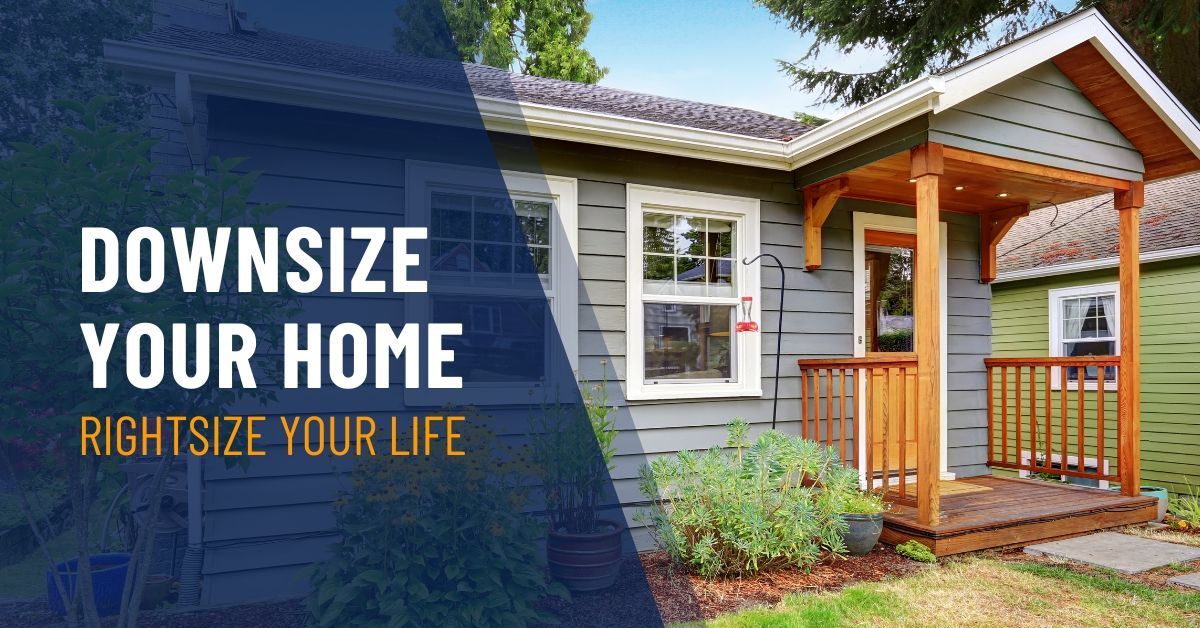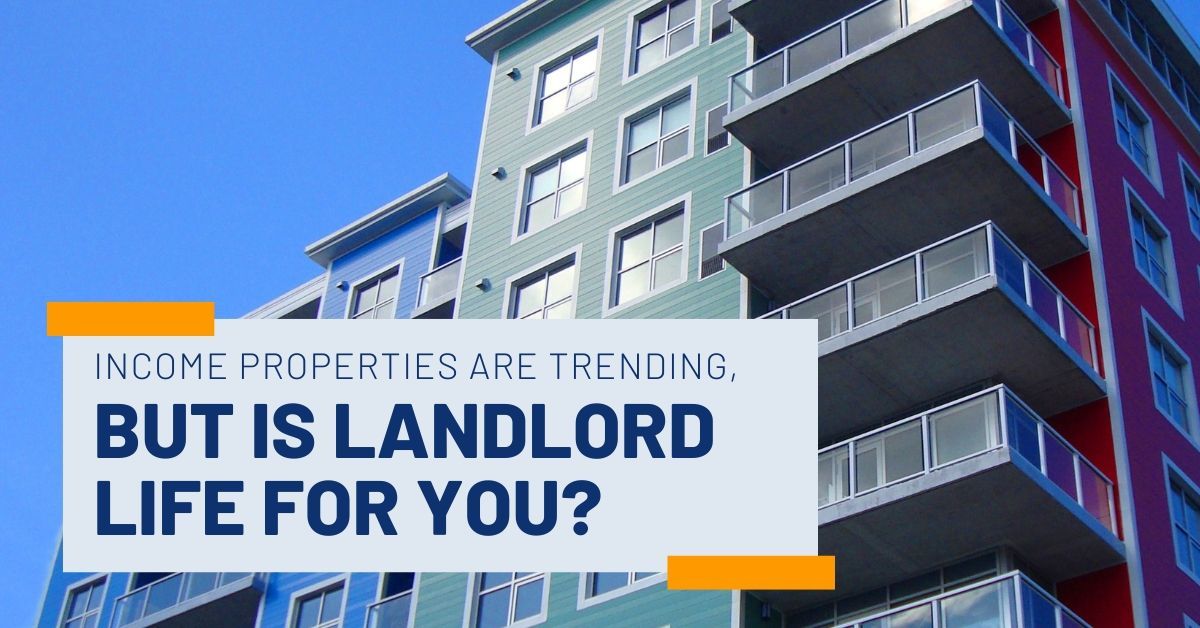
Blog

04 Apr, 2024
From wildfires to floods, the past few years have brought a historic number of devastating climate and weather events to the United States. In 2023 alone, there were 28 individual weather-related disasters that caused at least $1 billion in damages each. 1 These events triggered a huge influx of home insurance claims, and analysts expect the increase in both catastrophes and claims to continue. Adding to the problem, construction labor and supply costs have risen, making it more expensive to repair affected homes. Consequently, home insurance rates have surged: In 2024, Bankrate reports, premiums are already up an average of 23%, following double-digit increases the previous year. 2,3 In disaster-prone regions, the situation is even more challenging. Some insurers have pulled out of risky areas entirely, and many of those that still offer policies in high-risk areas have doubled or even tripled their premiums. 4 For most homeowners, comprehensive home insurance coverage is crucial for financial security—but massive rate increases can turn a once-affordable home into a financial burden. They can also pose a serious challenge for sellers. A home insurance policy is typically required to get a mortgage, and, in some hard-hit regions, we’re seeing sales fall through or homes sit on the market because insurance policies are unattainable or too expensive. 5,6 But don’t panic! While these broader trends may be out of your control, there’s still plenty you can do to save. Here are our top six strategies to slash insurance premiums while maintaining the protection you need. 1. SHOP AROUND Getting multiple quotes is a smart move for many major purchases, including home insurance. We recommend reviewing at least three estimates before you commit to a policy. You can get quotes either by reaching out to insurers directly or by working with an independent insurance broker. 7 You’ll need to provide detailed information about the property you’re insuring and your claims history. Make sure you read policies carefully before you choose. Sometimes, a policy can look like a better deal at first glance but turn out to have important coverage gaps. Be sure to consider how much the policy will pay out to repair or replace your home and review caps on personal possession and liability claims. It’s also smart to read reviews from policyholders (Trustpilot is a good place to start) and ratings published by organizations like the Better Business Bureau and J.D. Power. For help choosing the right policy, reach out to us for a list of trusted insurance professionals. 2. INCREASE YOUR DEDUCTIBLE The size of your deductible—which is the amount you pay before your insurance coverage kicks in on a claim—is a major factor in your insurance cost. A low deductible, such as $500, comes with higher premiums, while a higher deductible, like $2,500 or even $5,000, costs less on a monthly basis. In some cases, you may be able to customize your coverage further by designating a different deductible for certain kinds of claims, such as those caused by named storms or natural disasters. If you are confident that you have enough in savings to cover that initial outlay if needed, choosing a higher deductible can help you save significantly over the long term. According to Nerdwallet, raising your deductible from $1,000 to $2,500, for example, could save you an average of 11% each year. 8 3. BUNDLE MULTIPLE TYPES OF INSURANCE Insurers want to get as much of your business as possible, so most offer significant discounts if you bundle your home and auto insurance, meaning that you package the two policies together. With some insurers, you can get even higher savings by bundling more than home and auto—RV, boat, jewelry, and life insurance are potential options to consider. According to US News and World Report, insurers typically offer customers who bundle home and auto insurance 10-25% savings on monthly premiums. This approach also has other advantages: It cuts down on your paperwork, and in some cases—like if a storm damages both your home and car—you may be able to pay just one deductible instead of two when you file a claim. 9 However, before you sign on the dotted line, remember strategy #1 and be sure to shop around. In some cases, bundling isn’t the cheaper option, and bundling deals vary between companies. It’s also critical to carefully check that the bundled coverage offers everything you need. 4. ASK ABOUT AVAILABLE DISCOUNTS Did you know that being a nonsmoker might qualify you for a home insurance discount? 8 Some insurers offer some surprising incentives for policyholders who pose a statistically lower risk of filing a claim. In the case of nonsmokers, that’s because of the decreased risk of a home fire. Many carriers also offer discounts to military-affiliated families, homeowners in certain professions, such as teachers or engineers, or recent homebuyers. Sometimes, you can also save by opting for paperless billing or paying your premiums for a full year upfront. 10 Since available discounts vary significantly between insurers, the best strategy is to simply ask a representative for the full list of available discounts so you can see what cost savings might be available to you. 5. AVOID MAKING SMALL CLAIMS Worried that your premiums will rise significantly in the future? Try to avoid making a claim unless truly necessary. Many insurers offer discounted rates to policyholders who go a certain number of years without filing a claim, and filing multiple claims typically results in large increases. 10 If you file too many, you may even risk nonrenewal of your policy. 11 Since the cost of even a small premium increase can add up significantly over time, if you have minor damage to your home—for example, if a few shingles blew off your roof in a windstorm—it may be a wiser long-term financial decision to pay out of pocket instead of filing a claim. If the cost of the repair is less than your deductible, it never makes sense to file, and if it’s just slightly above your deductible, it’s also usually best to pay for the repairs yourself. Additionally, always be sure to review your policy before you make a claim. Even claims that are denied can count against you, so it’s not worth filing if the damage is clearly excluded from coverage. 11 If you find yourself in this situation, feel free to reach out for a list of reasonably-priced professionals who can help with home repairs. 6. BE STRATEGIC ABOUT HOME IMPROVEMENTS Insurance premiums alone may not be the deciding factor for a home improvement project, but it’s important to know how renovations could impact your rates—for better or worse. For example, some upgrades and repairs can reduce your premiums by making your home safer or less prone to certain types of damage. These include: 12 ● Upgrading your electrical system ● Updating your plumbing ● Installing a monitored security system ● Adding a fire sprinkler system ● Replacing the roof On the other hand, some upgrades can raise premiums significantly, either because they increase the value of your home (and therefore the cost to replace it) or because they pose a hazard. These include: 12 ● Installing a swimming pool or other water features ● Building an extension or expanding your living space ● Upgrading materials, like flooring or countertops ● Adding a fireplace or woodstove Whether or not your planned renovations are on either of these lists, it’s wise to inform your insurer about changes you make to your home—otherwise, you may risk gaps in coverage. And you’re always welcome to check with us before you begin any home improvement project to find out how it could impact the value and resale potential of your home. BOTTOMLINE: Protect Your Investment Without Sacrificing Enjoyment of Your Home Getting the coverage you need for financial security without overpaying can be a tricky balance, especially in today’s environment. But remember, while it’s important to find the best deal you can, home insurance isn’t an area to skimp on. For advice on your specific risks and the type of coverage you need, we recommend consulting with a knowledgeable insurance professional. We’re happy to connect you with a trusted adviser in our network. And if you’re considering a home renovation, feel free to reach out for a free consultation on how it might affect your property value (and your premiums). The above references an opinion and is for informational purposes only. It is not intended to be financial, legal, insurance, or tax advice. Consult the appropriate professionals for advice regarding your individual needs. SOURCES: 1. Climate.gov - https://www.climate.gov/news-features/blogs/beyond-data/2023-historic-year-us-billion-dollar-weather-and-climate-disasters 2. Bankrate - https://www.bankrate.com/insurance/homeowners-insurance/homeowners-insurance-cost/ 3. Policygenius - https://www.policygenius.com/homeowners-insurance/home-insurance-pricing-report-2023/ 4. CNN - https://www.cnn.com/2023/09/20/business/insurance-price-increase-risk-climate-first-street-dg/index.html 5. BBC - https://www.bbc.com/news/business-66367224 6. US News - https://realestate.usnews.com/real-estate/articles/how-climate-change-could-impact-your-home-value 7. Nerdwallet - https://www.nerdwallet.com/article/insurance/how-to-shop-for-homeowners-insurance 8. Nerdwallet - https://www.nerdwallet.com/article/insurance/save-on-homeowners-insurance 9. US News and World Report - https://www.usnews.com/insurance/homeowners-insurance/how-to-bundle-home-and-auto-insurance 10. Marketwatch - https://www.marketwatch.com/guides/insurance-services/how-to-save-on-homeowners-insurance/ 11. Bankrate - https://www.bankrate.com/insurance/homeowners-insurance/when-to-file-a-home-insurance-claim/#when 12. Bankrate - https://www.bankrate.com/insurance/homeowners-insurance/home-insurance-and-renovations/

13 Mar, 2024
When you've lived somewhere for many years, it can be tough to say goodbye. But if you (or a loved one) currently have a home that is bigger than necessary or is too high maintenance, it may be time to trade unused square footage for a smaller, more manageable space. Take it from the downsizers who’ve been there: Although living small might require some adjustments, it can also be liberating––especially if you're in a stage of life where past responsibilities have given way to new possibilities and adventures. In fact, many downsizers report feeling invigorated by the change, according to real estate journalist and author Sheri Koones. “It scares people to think of moving into a smaller space,” said Koones to the Associated Press. “But every single person I interviewed who has made the transition says they are so happy they did.”1 The key is to find somewhere you can live well and move around comfortably, without feeling overly restricted. If you like the idea of aging in place or are already in your golden years, you may also want to look for signs that a new home can conveniently age with you. With that in mind, we recommend focusing your search around three key factors: desired lifestyle, optimal design, and long-term accessibility. Read on for specific tips, then call us for a free consultation. We can help you identify the types of homes that are best suited to living large with less. Do you have a loved one whose housing needs have changed? Share this information to help start a conversation about the benefits of downsizing. DESIRED LIFESTYLE The best part of downsizing is the lifestyle you unlock when you trade square footage for convenience. With fewer chores and home maintenance tasks to worry about, you can instead channel your energy into other pursuits. For example, instead of spending your afternoons working in the yard or cleaning, you can catch up on the news, read a bestseller, start a new craft project, or pursue other hobbies. You may even be able to travel or spend more time with friends and family. Research shows that individuals over the age of 65 report more life satisfaction when they have the opportunity to spend time around children, talk with friends, socialize in community centers, volunteer, or engage in hobbies. But that can be hard to do regularly when you've got a home that needs constant attention or you live far from your community.2 As you compare potential homes, keep in mind the type of lifestyle you envision. Do you plan to travel? If so, a home with extra security, such as a condominium or gated community, may give you some welcome peace of mind. Or do you plan to have friends and family stay overnight? In that case, you may want to look for a floor plan with flex space or a property that has access to separate guest suites. Alternatively, a senior community that offers catered meals and housekeeping may be a better choice if you or a spouse need extra support. Action item: Grab a pen and take some time to envision what your ideal future might look like. Write down the activities and hobbies you hope to add to your life or continue with going forward, as well as the chores and responsibilities you'd love to drop. We can use those answers to help shape your house hunt. OPTIMAL DESIGN Even though your new home will be smaller, that doesn't mean it has to feel cramped. As Koones explains, “The key is to have a home that is efficiently designed, both in terms of energy use and in terms of space.”1 Look for features that can help make a space feel bigger, like high ceilings, large windows, and an open layout. Built-in shelving that extends all the way to the ceiling can also make a small room feel more expansive by helping to draw the eye upward. The same goes for highly placed window treatments and striped or mural-style wallpaper, says interior designer, Kati Greene Curtis. “You’ll feel like you’re walking into the scene,” said Curtis to the Washington Post.3 Efficient layouts with flexible, multi-purpose rooms and few, if any, hallways work especially well for small-scale living. You can also limit dead space in a home by steering clear of layouts with awkward corners, unusable nooks, and other space-eating design elements. In addition, look for features that support a simpler, lower-maintenance lifestyle, such as easy-care floors, durable countertops, and bare walls with little, if any, crown molding. Don’t write off a home too soon, though, if it feels narrow or congested because of outdated design or poor staging. Cosmetic issues that visually shrink a space are often easy to fix. For example, you can instantly make a room feel bigger just by painting it a lighter shade. Adding mirrors and swapping out heavy curtains for sheer ones can also be effective. Plus, utilizing multipurpose furniture with hidden storage is a great way to maximize space. Action item: Make a note of your must-keep furniture and other items. Then pull out a measuring tape and write down the dimensions. Once it's time to visit homes, we'll have a more accurate sense of what will fit and how much space you’ll need. To get your creative juices flowing, you may also want to flip through some design magazines that specialize in compact living or catalogs that feature space-saving furniture and accessories. If you give us a list of your favorite features, we can use it to pinpoint homes that are a good match. LONG-TERM ACCESSIBILITY Buying a home that you can age well in can be a great way to boost your health prospects and happiness. According to the U.S. Department of Housing and Urban Development (HUD), homeowners who age in place instead of in an institutional environment not only save money over time, they also enjoy greater health and emotional benefits.4 Aging in place is also popular. According to survey findings from the National Poll on Healthy Aging, the vast majority of adults between the ages of 50 and 80 would prefer to age in their own homes.5 But even though many adults want to age in place, only 34% of surveyed adults currently live in a home with the features to make it possible.5 If you're already in the second half of your life, then it's smart to prioritize accessibility now, even if you're highly mobile. Choosing an accessible home will improve your odds of staying put for longer. Plus, you never know when you might need an accessible light switch, handrails in the bathroom, or a seat in the shower, says Sheri Koones. “Yes, older people with disabilities need them, but even younger people break a leg skiing, or have situations where they want a barrier-free shower.”1 As you consider your options, try to imagine what your needs might be as you get older and be proactive in identifying potential obstacles, recommends the National Council on Aging (NCOA).6 For example, a single-level home or one with wide enough stairs for a stair lift or access to an elevator may be a more practical choice than a home with lots of narrow stairs. Alternatively, a home with at least one ground-level bedroom and bathroom may also work well for you. Consider your needs outside the home, as well: If you frequently visit the doctor, grocery store, or community center, for example, then you may benefit from choosing a property nearby. Action item: Review the checklist below, adapted from the National Institute on Aging’s home safety worksheet, or download the full version from the agency’s website.7 Highlight the items that are most important to you. We can reference these guidelines as we consider potential homes and suggest ways to adapt a property to meet your current or future requirements. HOME SAFETY CHECKLIST 7 If a walker or wheelchair is needed, can the entrances to the house be modified — perhaps by putting in a ramp to the front door? Are there any tripping hazards at exterior entrances or inside the house? Are the hallways and doorways wide enough to accommodate a wheelchair if needed? Does the home have at least one ground-floor bedroom and bathroom? Are there any staircases, and if so, could they accommodate a stair lift? Is the house well-lit, inside and out, particularly at the top and bottom of stairs? Could handrails be installed on both sides of the staircase? Is there at least one stairway handrail that extends beyond the first and last steps on each flight of stairs? Are outdoor steps sturdy and textured to prevent falls in wet or icy weather? Are there grab bars near toilets and in the tub or shower? Have a shower stool and hand-held shower head been installed to make bathing easier? Is the water heater set at 120° F to avoid scalding tap water? Are there safety knobs and an automatic shut-off switch on the stove? Have smoke and carbon monoxide alarms been installed near the kitchen and in all bedrooms? Are there secure locks on all outside doors and windows? BOTTOMLINE You don't have to compromise on comfort to downsize successfully. We can help you strategize your next move and identify the best new home for you—whether that's a smaller home for rent or another one to call your own. We take pride in offering a full-service real estate experience and assisting our clients through all stages of the real estate journey. And we’ll go the extra mile to maximize your current home's sales price so that you’re set up for financial security. The above references an opinion and is for informational purposes only. It is not intended to be financial, legal, or tax advice. Consult the appropriate professionals for advice regarding your individual needs. Sources: Associated Press (AP) - https://apnews.com/article/lifestyle-f094372b46bae82020c174907eb953c0 Healthcare (Basel) - https://www.ncbi.nlm.nih.gov/pmc/articles/PMC10671417/ Washington Post - https://www.washingtonpost.com/home/2023/02/07/make-small-room-appear-larger/ HUD User - https://www.huduser.gov/portal/periodicals/em/fall13/highlight2.html National Poll on Healthy Aging - https://www.healthyagingpoll.org/reports-more/report/older-adults-preparedness-age-place National Council on Aging (NCOA) - https://www.ncoa.org/adviser/medical-alert-systems/downsizing-for-aging-in-place/ National Institute of Health (NIH) - https://www.nia.nih.gov/sites/default/files/2023-04/worksheet-home-safety-checklist_1.pdf

14 Feb, 2024
One of the best parts of owning a home is the freedom to make it truly your own with design choices that reflect your personality and lifestyle. Whether you lean toward contemporary design or a farmhouse aesthetic, your home is your canvas. Even so, it’s always smart to think about the long-term impact those decisions might have on your home’s value. Choosing over-personalized or unpopular materials and finishes could make your home less appealing to future buyers. And selecting out-of-style or overly-trendy elements could cause your home to feel dated quickly. To help inspire your design choices, we’ve rounded up some of the top trends we’re watching in 2024. Keep in mind, not all of these will work well in every house. If you plan to list or renovate your property, give us a call. We can help you realize your vision and maximize the impact of your investment. Spa-Like Bathrooms We could all use a little more relaxation in our lives—so why not bring the spa into your home? In 2024, more homeowners will remodel their bathrooms to turn them into personal oases.1,2 If you’re undertaking a renovation, consider upgrading fixtures and materials. Handmade tile and custom cabinetry can add a touch of style and luxury. Trade stark whites for warm neutrals to create a more relaxed feel—think light wood tones, creams, and beiges.3 Complete the look with soft ambient lighting from a backlit mirror or pair of decorative sconces.2,3 If you want to maximize the mind-body benefits of a relaxing bathroom (and have the budget to spare), you might consider installing a steam shower, infrared sauna, or cold plunge tub.3 Not looking to spend as much? Even minor upgrades like a massaging showerhead or heated towel bar can add some pampering to your morning routine.3 But remember, if you’re modifying your bathroom, it’s always wise to work with experienced and licensed professionals to avoid water damage that could lead to costly repairs. We can refer you to a trusted contractor for help.

By Donna Bethman
•
05 Jan, 2024
A growing share of home buyers and sellers sat on the sidelines last year as the pace of home sales continued its downward trajectory. 1 In fact, since the Federal Reserve began its series of interest rate hikes in 2022, the combination of higher borrowing costs and record-high home prices has fostered the steepest real estate market slowdown since the 2008 recession. 2 Priced out of the market, a generation of would-be buyers has been forced to delay their plans for homeownership. 3 At the same time, current owners—reluctant to give up their pandemic-era mortgage rates—are waiting to sell, which has resulted in a sharp drop in listings. 4 But there may be some relief in sight: In December, the Fed signaled that it was done raising interest rates—and suggested that it could cut rates by 0.75% over the coming year. While mortgages don’t directly follow the federal funds rate, they typically move in tandem—so cheaper home loans may finally be on the horizon. 5 Lower mortgage rates should bring some much-needed movement back into the real estate sector. But with a market this fluid, the home buyers and sellers with an edge will be those who proactively leverage a real estate agent’s on-the-ground expertise and stay flexible so that they can quickly adapt to changes. What does that mean for you? Read on to learn more about the current state of the U.S. housing market, the potential opportunities for buyers and sellers, and economists’ predictions for the year ahead. HOME PRICES WILL REMAIN RELATIVELY STABLE Not even 8% mortgage rates could bring home prices crashing down in 2023, as some prospective home buyers may have hoped. In fact, on average, U.S. property values ended the year higher—with declines in some areas of the country offset by appreciation in others. 6 Prices typically fall when rising interest rates drive down demand. So what’s keeping home values high? Mike Simonsen at Altos Research points to a nationwide housing shortage: “Declining home prices probably require that supply-and-demand imbalance, and what we have is really a balance. There's a balance between low demand and low supply.” 7 Analysts expect that equilibrium to continue to prop up home prices in 2024, although the specific forecasts vary. For example, economists at Realtor.com predict that the median home price will fall slightly, by 1.7%, while those at Fannie Mae project modest price growth of 2.8%. 6,8 However, experts widely agree: Mortgage rates will be the largest driver of property values. If rates fall faster than expected, more buyers will enter the market—which could send home prices soaring higher. What does it mean for you? There’s no evidence that home prices are headed for a major decline. So if you’re ready and able to afford a home, this is a great time to test the waters. The best bargains are often found in a slower market, like the one we’re experiencing right now. Contact us to discuss your goals and budget. We can help you make an informed decision about the right time to buy. And if you’ve been waiting to sell your home, this could be your year. Price growth has slowed, so now is the time to maximize your equity gains while minimizing your competition. Contact us for recommendations and to find out what your home could sell for in today’s market. MORTGAGE RATES SHOULD FINALLY TREND DOWN The best news we've got incoming for 2024? The extra-high mortgage rates that have weighed heavily on the real estate market may finally be headed south. At its December meeting, the Fed signaled that the worst is likely behind us and that it expects to cut its overnight rate in 2024. Analysts predict that mortgage rates will fall in lockstep. 5 “Given inflation continues to decelerate and the Federal Reserve Board’s current expectations that they will lower the federal funds target rate next year, we likely will see a gradual thawing of the housing market in the new year,” said Freddie Mac’s Chief Economist Sam Khater following the announcement. 9 The average 30-year fixed mortgage rate has already declined from an October high of around 8%, and analysts at Fannie Mae, the Mortgage Bankers Association, and Realtor.com all forecast that rates will trend down this year, ending 2024 closer to 6%. 7 However, it’s not all good news: It appears that the days of 3% mortgage rates are firmly behind us. “As long as the economy continues to motor along, the new normal of higher rates is here to stay,” explains Greg McBride, chief financial analyst for Bankrate. 4 So, when it comes to a home loan, borrowers may need to adjust their expectations. What does it mean for you? If you're a prospective home buyer, declining mortgage rates could give you the opportunity to lock in a more affordable monthly payment. And if you purchase before the market reheats, you could secure an especially good deal. To find the lowest rate, it pays to compare lenders. Ask us to refer you to a mortgage broker who can help you shop around for the best option. Sellers also have reason to celebrate buyers' lower interest rates: As the barriers to entry to the housing market decline, they could enjoy more or better offers. Reach out to discuss how we can help you maximize your home’s sales potential. LOWER RATES WILL BRING SOME BUYERS AND SELLERS BACK TO THE MARKET Over the past couple of years, higher mortgage rates have cooled home buyer demand. They’ve also delayed the plans of many home sellers, who have been reluctant to trade in their current mortgages for loans that are several points higher. With so many market participants playing the waiting game, the real estate sector has slowed significantly. National Association of Realtors (NAR) Chief Economist Lawrence Yun estimates that the number of existing home sales fell by 18% last year following a 17% decline in 2022. 10 However, as financing costs tick down, sales volume is expected to rise. “Lower mortgage rates would help spur home sales activity, which [is] expected to increase in 2024 compared to 2023,” explains Selma Hepp, chief economist at CoreLogic. “Declines in mortgage rates will drive more sellers to trade their existing home and help add much-needed inventory to the market, leading to more transactions.” 4 There’s also evidence that the patience of holdout home buyers may be waning, despite higher borrowing costs. A recent survey by Bank of America found that the number who are willing to wait for prices or mortgage rates to decline before making a purchase fell from 85% to 62% in just six months. 11 “When it comes down to it, if buying a home is your goal and within your budget, the best time to buy is when you're ready financially and you can find a home that fits your needs,” Matt Vernon, head of consumer lending at Bank of America, advised in a recent release. “Even in the current interest rate environment, there are clear benefits to purchasing a home and beginning to build equity.” 11 What does it mean for you? If you’ve been waiting to buy a home, you might want to consider purchasing before the competition picks up. Pent-up demand could bring a flood of buyers back into the market as mortgage rates decline. Contact us if you’re ready to begin your home search. If you’re hoping to sell this year, you may also want to act fast. An increase in listings will make it harder for your home to stand out. We can help you chart the best course to maximize your profits, starting with a professional assessment of your home’s current market value. Reach out to schedule a free consultation. THE HOUSING SUPPLY SHORTAGE WILL PERSIST Will home buyers who are eager for options have more homes to choose from this year? Yun thinks so. He believes sellers will soon grow weary of waiting to list. “Pent-up sellers cannot wait any longer. People will begin to say, ‘life goes on,’” the NAR economist speculated at a November conference. “Listings will steadily show up, and new home sales will continue to do well.” 10 But not everyone agrees. Economists at Realtor.com forecast that inventory could drop by as much as 14% this year. The decline in existing homes for sale has been compounded by a persistent shortage of new construction, with single-family housing starts falling 10.3% in 2023 and 11.2% in 2022. 6 Even so, newly-built homes are playing an increased role in easing the supply crunch, accounting for around one-third of all homes for sale in 2023—which was twice the historical average. 12 But new construction alone isn’t expected to fill the inventory gap. According to First American Financial Corporation’s Chief Economist Mark Fleming, the U.S. currently has a shortfall of around one million homes, and conditions won’t ease until individual owners re-enter the market. “Only when more homeowners decide to sell, and then buy again, will housing supply and the pace of sales return to anything resembling normal.” 13 What does it mean for you? Inventory remains tight, but buyers can benefit from the search expertise of a real estate professional. We can tap our extensive network to access off-market and pre-market listings while helping you explore both new construction and existing homes in our area. While sellers will continue to benefit from the low-inventory environment, they should be prepared to compete against brand-new homes. We can help you prep your property for the market and highlight the features most likely to appeal to today’s buyers. WE'RE HERE TO GUIDE YOU While national real estate forecasts can give you a “big picture” outlook, real estate is local. And as local market experts, we know what's most likely to impact sales and drive home values in your neighborhood. As a trusted partner in your real estate journey, we'll keep our ears to the ground so that we can guide you through the market's twists and turns. If you’re considering buying or selling a home in 2024, contact us now to schedule a free consultation. Let’s work together and craft an action plan to meet your real estate goals. The above references an opinion and is for informational purposes only. It is not intended to be financial, legal, or tax advice.Consult the appropriate professionals for advice regarding your individual needs. Sources: 1. CNN - https://www.cnn.com/2023/10/19/homes/existing-home-sales-september/index.html 2. Goldman Sachs - https://www.gspublishing.com/content/research/en/reports/2023/10/23/2d814362-a656-4cb3-8586-bea8591188e3.html 3. ABC News - https://abcnews.go.com/US/millennials-priced-homeownership-feeling-pressure/story?id=105032436 4. Bankrate - https://www.bankrate.com/real-estate/housing-market-2024/ 5. CBS News - https://www.cbsnews.com/news/interest-rates-are-paused-heres-why-thats-good-news-for-homebuyers/ 6. Realtor.com - https://www.realtor.com/research/2024-national-housing-forecast 7. NerdWallet - https://www.nerdwallet.com/article/mortgages/2024-homebuying-trends-property-line-november-2023 8. Fast Company - https://www.fastcompany.com/90991612/home-price-2024-outlook-fannie-mae 9. Freddie Mac - https://freddiemac.gcs-web.com/news-releases/news-release-details/mortgage-rates-drop-below-seven-percent 10. National Association of Realtors - https://www.nar.realtor/newsroom/nar-chief-economist-lawrence-yun-forecasts-existing-home-sales-will-rise-by-15-percent-next-year 11. Bank of America - https://newsroom.bankofamerica.com/content/newsroom/press-releases/2023/12/bofa-report-shows-fewer-prospective-homebuyers-willing-to-wait-f.html 12. Marketplace - https://www.marketplace.org/2023/11/27/mortgage-rates-new-home-sales/ 13. First American - https://blog.firstam.com/economics/whats-the-outlook-for-the-housing-market-in-2024

11 Dec, 2023
Vickie will be honored on December 27, 2023. This recognition is part of the Phantoms’ ongoing Hometown Heroes initiative, which singles out local military heroes during games at the PPL Center. Vickie Landis-Rentsel joined the Air Force in 1986. She served for the 33rd Medical Service Squadron at McGuire Airforce Base and later the 21st at Patrick Airforce Base. Even after an honorable discharge in 1994, the training and knowledge she gained as a Mental Health Specialist remained foundational to her work. For over 33 years, Vickie has grown a real estate business that caters to Eastern Pennsylvania, covering Philadelphia to the Lehigh Valley. Because of her real estate profession, Vickie has been privileged to be able to remain committed to serving her community by providing free mentorship, financial aid, and housing assistance to individuals who have been affected by trauma. In 2021, Vickie established REST Connection, a non-profit organization that offers services to at-risk women, enabling them to achieve social and economic independence. To learn more about REST Connection and join Vickie on her mission to help women at risk, visit restconnection.org. To purchase tickets, please visit our fundraising link: https://fevo-enterprise.com/event/Restconnection . $5 from each ticket sale will go back to REST Connection! The mission of REST Connection is to provide direct services to vulnerable and at-risk women to empower them to achieve social and economic independence by connecting them with the tools, services, and support needed to equip them to give back to their community. They embrace any woman at risk who is committed to discovering and embracing her full potential by embarking on a guided journey to break destructive cycles and develop the skills and mindset needed to thrive in life, relationships, and her community. While they are not equipped to support women who are in active addiction or have untreated mental health disorders, we do partner with organizations that provide those front-line services to prepare the woman to graduate into our program. The mission of the Vickie Landis Rentsel Team at Keller Williams Realty Group is to provide each client with the information, resources and support services needed to make wise, informed decisions regarding all types of real estate transactions. With more than 33 years of real estate experience, Vickie has developed proven systems and strategies that simplify the complicated maze of buying and selling real estate. When working with them, you get the combined expertise, energy, and ingenuity of a team of the area's premier Realtors.

01 Dec, 2023
It’s the most wonderful time of the year. But for many families with festive plans and hectic schedules, it’s also the most wasteful. According to one survey, for example, 60% of respondents admitted to throwing away more than usual during the holiday months as they filled up their trash bins with uneaten food, wrapping paper, gift bags, and commercial packaging.1 The reality is, Americans routinely toss about 25% more trash between Thanksgiving and New Year’s than at any other time of year, according to the U.S. Environmental Protection Agency.2 In fact, we throw away so much ribbon during the holidays—around 38,000 miles’ worth—that the discarded material could easily run more than one and a half times around the Earth.3 As our holiday schedules grow busier, many of us also forget to take simple steps at home to shrink our carbon footprints or prepare for a more energy-efficient winter. Luckily, it’s not that hard to shift our habits and plan for a more sustainable and environmentally-friendly celebration. Here are five ideas for ringing in the holidays this year without overstressing Mother Nature. 1. PREP YOUR HOME FOR WINTER Depending on the amount of time and resources you have available, you could cut your carbon emissions significantly this season just by winterizing your home. Investing in a more sustainable way to warm up your surroundings—such as a geothermal heat pump or solar heating—could be especially impactful if your current HVAC is underperforming and you can afford a more expensive system.4 Replacing old appliances or things like chronically leaking windows with newer, more energy-efficient solutions can also save you money over the long term.5 Plus, you may be able to claim a federal energy-efficient tax credit for up to 30% of your investment.6 You don’t necessarily have to spend a lot upfront, though, to prep your home for winter. Even simple tweaks—such as sealing windows and doors or upgrading to more energy-efficient window coverings—can lower your energy consumption and reduce your carbon footprint.7 Incorporating environmentally healthier habits into your routine can also make a meaningful difference. According to the U.S. Department of Energy, for example, dialing back your thermostat by as little as seven to 10 degrees for eight hours a day can trim up to 10% from your bills.8 Consider a home energy assessment to help you pinpoint what needs fixing. Depending on your comfort level, you can audit your home’s energy efficiency yourself with the help of the Department of Energy’s DIY Guide.9 Or you can hire a professional, such as a home energy auditor or weatherization contractor.10 Call us for a recommendation or personal referral. 2. DECORATE SUSTAINABLY Decking your home’s halls is one of the most jolly seasonal activities of all. There’s something special about gathering ’round with friends and family and relaxing in the comforting glow of a festively decorated space. But since so much of the holiday-themed decor that’s sold in stores is notoriously disposable, it can be a challenge to spruce up your home sustainably. Cheaply produced and rarely recyclable, store-bought decorations are often made with plastic, styrofoam, and other environmentally unfriendly materials that can crowd landfills for generations.2 Luckily, you don’t have to trade style for sustainability when making your holiday decor. Thrifting is still in vogue, so consider crafting new and on-trend decorations out of secondhand finds or upcycling items already in your closet. For example, you could transform an ill-fitting sweater into a holiday-themed pillow, turn teacups into candles, or turn leftover shipping boxes into creative decorations. Alternatively, natural decor foraged from your yard—such as dried leaves, flowers, pine cones, and branches—can make for especially beautiful wreaths and centerpieces. If you do purchase store-bought decor, proactively look for the most environmentally friendly options. LED lights are now ubiquitous in stores and use far less energy than incandescent versions.11 Similarly, if you celebrate with a Christmas tree, think twice about choosing an artificial option. Plastic trees may be reusable, but natural trees are generally thought to have a smaller carbon footprint.1 3. CUT BACK ON HOLIDAY SHOPPING Shopping online or at the mall may be convenient, but it can be costly for the environment. The greenhouse emissions from shipping and transportation alone add up fast, as do the emissions that are produced when an item is first made. According to the online consignment and thrift store, thredUp, 4.5 billion pounds of carbon emissions could be saved if every American bought just one used item instead of new this year.12 Splurging on brand-new products also makes it more likely that the gently used but still functional items that you’ve got at home will wind up in the trash. Rather than buy new, check vintage stores and consignment shops for unique gifts that you and your recipient can both feel good about. According to research by thredUp, most people are open to receiving gently-used presents, especially if they’re socially-conscious members of Gen Z.12 Alternatively, consider regifting items that you haven’t used, upcycling something you own, or try crafting gifts by hand. Giving away special experiences, such as concert tickets or community memberships, may also be a more eco-friendly option. So is donating to a favorite charity in a gift recipient’s name or offering gifts of time, such as promising to help a loved one clean out their garage or fill their freezer with home-cooked meals. Research shows that gift recipients often value thoughtful gifts with sentimental value, especially if they’re homemade or nostalgic or will provide them with a unique experience.13 And if you prefer to buy something tangible, look to local businesses that source or manufacture their goods nearby. Craft fairs and community markets are a great place to start. Or, give us a call and we’d be happy to share a list of our favorite local stores, depending on the type of gift and your budget. We make an effort to patronize the independently-owned shops and restaurants around town and would love to share our recommendations. 4. GREEN YOUR HOLIDAY DINNER Do you hail from a family of passionate carnivores? If so, trading your meat for a vegetarian option may seem like a step too far—especially for a holiday dinner. But swapping your meat for beans isn’t the only way to “’green” your holiday meal. For example, you can consciously source your meat from ethical sellers, prioritize local producers for seasonal sides, and serve enough filling vegetables to satisfy a large portion of your appetite.14 You can also minimize food waste by planning ahead so that you don’t cook more than necessary. Check out the Natural Resources Defense Council’s dinner party “Guest-Imator” to help you narrow down how much food you and your guests will actually need.15 In addition, consider using the USDA’s FoodKeeper App to help track safety recalls and set up calendar reminders for expired food.16 Once you’re finished eating, clear the table immediately and either freeze the leftovers you’d like to keep or send guests home with reusable containers. Or, if you have untouched food that’s still whole or in unopened packaging, take it to a local food bank or homeless shelter. We’d be happy to share a list of options in our area. 5. DONATE OR RECYCLE WHAT YOU CAN Once the festivities are over, the real work on behalf of Mother Nature begins. This is the time when taking a few minutes at the end of your holiday celebration to swiftly collect wrapping paper and ribbons, unwanted packaging, and other discarded items can make a real environmental difference by reducing what you send to landfills. Your goal should be to reuse what you can and compost or recycle what’s left over. For example, if you upgrade any electronic gadgets over the holidays, you can conserve resources and limit pollution by donating or properly recycling your old versions. The U.S. Geological Survey estimated that recycling a million laptop computers could help save the energy equivalent of 3,500 homes’ annual usage of electricity.16 Similarly, the EPA says that recycling one million phones can help salvage 35,000 pounds of copper, 772 pounds of silver, 75 pounds of gold, and 33 pounds of palladium.17 It can also help to reimagine new ways to make old traditions more eco-friendly. For instance, if lighting candles is part of your holiday celebration, consider choosing beeswax candles this year instead of the typical paraffin wax, which is a petroleum derivative. Not only are they cleaner burning and less toxic, but the leftover wax is biodegradable and can be composted, unlike traditional candle wax.18 There are also plenty of earth-friendly ways to dispose of a natural Christmas tree without kicking it to the curb. Trees that are sent to landfills release a potent greenhouse gas called methane.19 So, it’s important to properly dispose of a live tree, if you have one, so it can be recycled or composted. If you’re not sure how, reach out for a list of local options. BOTTOMLINE We can still celebrate a fun and festive season without draining our community’s resources or sending leftovers to the landfill. And remember, we’re here to lend a helping hand, now or in the new year. This is the perfect time to strategize your next move or set some real estate resolutions with personalized guidance from an expert. Reach out today to schedule a free consultation. The above references an opinion and is for informational purposes only. It is not intended to be financial, legal, or tax advice. Consult the appropriate professionals for advice regarding your individual needs. Sources: Eco Watch – https://www.ecowatch.com/sustainable-decor-winter-holidays.html Architectural Digest – https://www.architecturaldigest.com/story/best-holiday-and-seasonal-decor-for-the-environment The New York Times – https://www.nytimes.com/2019/12/18/style/zero-waste-holiday.html Environmental Protection Agency – https://www.epa.gov/burnwise/heat-pumps U.S. Department of Energy – https://www.energy.gov/eere/buildings/articles/appliance-and-equipment-standards-fact-sheet IRS – https://www.irs.gov/credits-deductions/energy-efficient-home-improvement-credit Energy Star – https://www.energystar.gov/saveathome/seal_insulate/sealing_window_door U.S. Department of Energy – https://www.energy.gov/energysaver/programmable-thermostats U.S. Department of Energy – https://www.energy.gov/energysaver/do-it-yourself-home-energy-assessments Kiplinger – https://www.kiplinger.com/slideshow/real-estate/t029-s001-12-ways-to-prepare-your-home-for-winter/index.html U.S. Department of Energy – https://www.energy.gov/energysaver/articles/reduce-waste-and-save-energy-holiday-season# Thred Up – https://newsroom.thredup.com/news/thredup-releases-thrift-for-the-holidays-report-revealing-that-new-waves-of-consumers-are-planning-to-gift-secondhand-this-year The Conversation – https://theconversation.com/the-4-biggest-gift-giving-mistakes-according-to-a-consumer-psychologist-195169 Popular Science – https://www.popsci.com/story/diy/sustainable-holiday-strategies/ Natural Resources Defense Council – https://savethefood.com/guestimator USDA – https://www.usda.gov/media/blog/2018/10/04/usda-updates-foodkeeper-app-include-new-food-items U.S. Environmental Protection Agency – https://www.epa.gov/recycle/electronics-donation-and-recycling CanICompostIt.com – https://canicompostit.com/candle-wax/ CNN – https://www.cnn.com/2022/11/25/us/real-or-artificial-christmas-tree-climate/index.html

FIND US
Bucks/Lehigh Valley Location
Montgomery/Chester/Berks Location
© 2024
All Rights Reserved | Vickie Landis Rentsel Team

Real Estate Web Design by Bullsai



